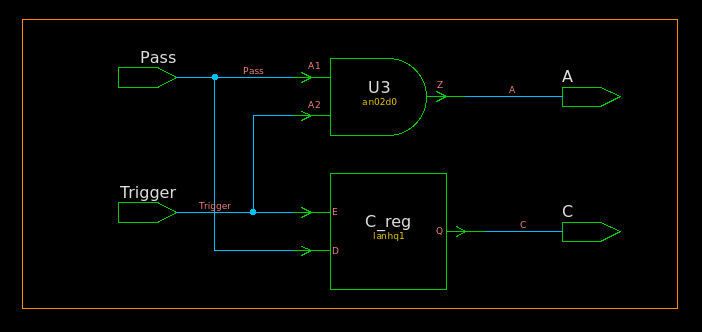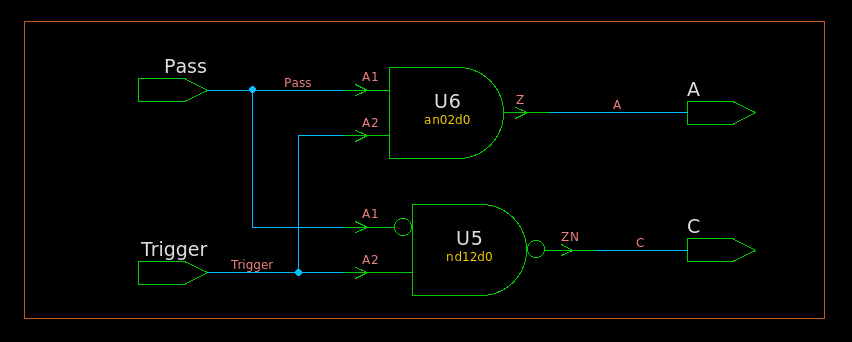Latch Inference in Verilog
always@( * )
always@( * ) blocks are used to describe Combinational
Logic, or Logic Gates. Only = (blocking) assignments should
be used in an always@( * ) block.
Latch Inference
If you DON'T assign every element that can be
assigned inside an always@( * ) block every time that
always@( * ) block is executed, a latch will be inferred
for that element
The approaches to avoid latch generation:
- set default values
- proper use of the
elsestatement, and other flow constructs
without default values
latch is generated
RTL
1 | module TOP ( |
synthesized netlist

1 | ///////////////////////////////////////////////////////////// |
add default value
Default values are an easy way to avoid latch generation
RTL
1 | module TOP ( |
synthesized netlist

1 | ///////////////////////////////////////////////////////////// |
if evaluation
signed number cast to unsigned
automatically before evaluating
1 | // tb.v |
1 | $ vlog tb.v |
reference
UC Berkeley CS150 Lec #20: Finite State Machines Slides
Lee WF. Learning from VLSI Design Experience [electronic Resource] / by Weng Fook Lee. 1st ed. 2019. Springer International Publishing; 2019. doi:10.1007/978-3-030-03238-8